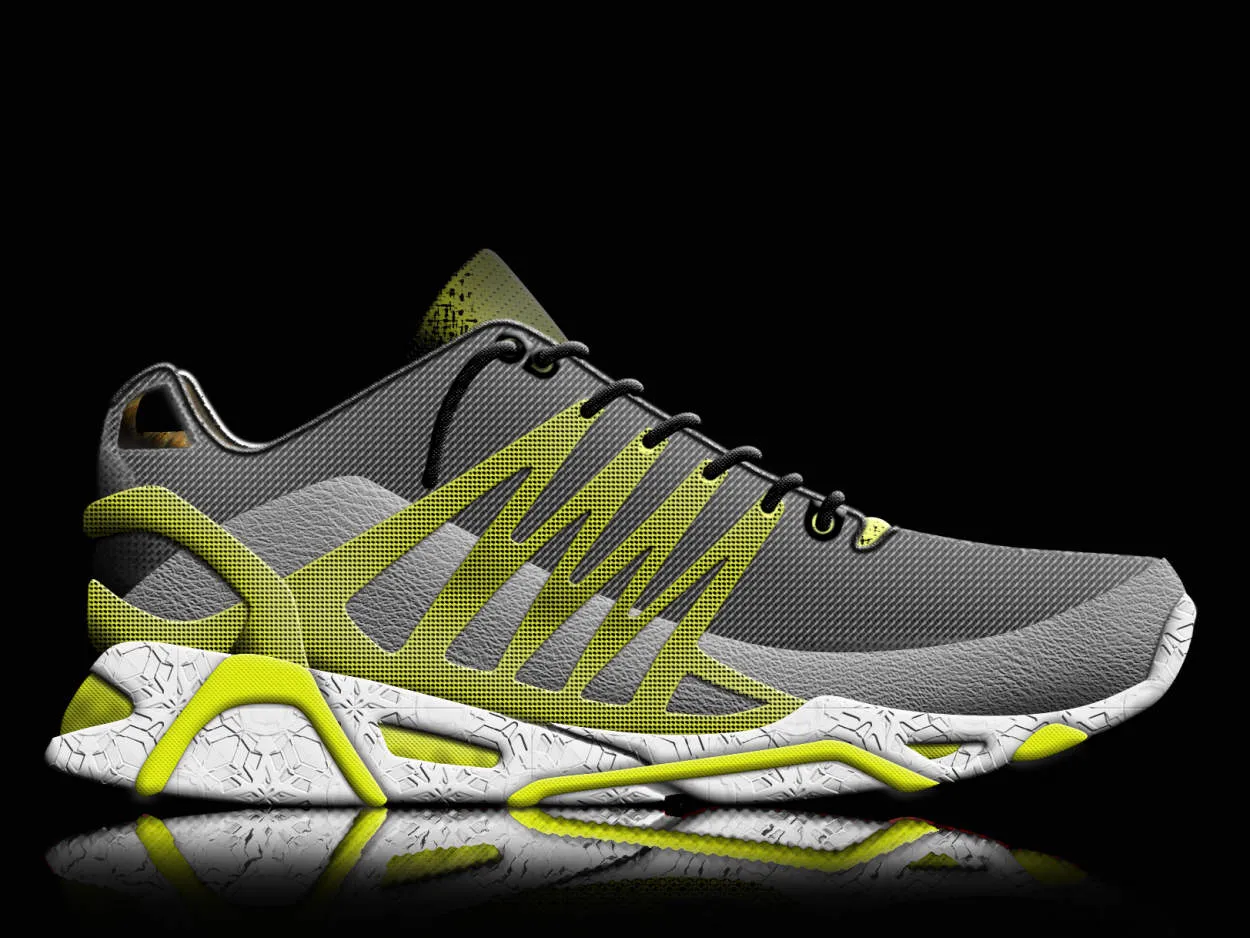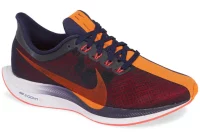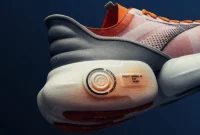The Art and Science of Sports Shoe Design examines the intricate process behind creating athletic footwear that balances both style and performance. This article delves into the innovative techniques and cutting-edge materials utilized by designers to enhance athletic performance while keeping up with changing fashion trends.
Behind the Scenes of Shoe Manufacturing
Shoe manufacturing is a process that involves both artistry and scientific precision. In the dynamic world of sports shoe design, numerous factors contribute to creating high-performance footwear that not only looks good but also enhances athletic performance. Let’s take a closer look at the fascinating behind-the-scenes journey of sports shoe manufacturing.
The Creative Process
The journey begins with the creative process where shoe designers draw inspiration from various sources. They analyze current market trends, study athlete requirements, and explore new materials and technologies. These creative minds envision designs that not only capture attention but also meet the functional demands of athletes.
Research and Development
Once the initial designs are finalized, research and development teams take over to transform these concepts into reality. They conduct extensive analysis and testing to ensure that the shoes will withstand the rigors of sports activities. Materials are carefully chosen, considering factors such as durability, flexibility, and breathability.
Prototyping and Testing
Prototyping plays a crucial role in the shoe manufacturing process. Advanced computer software and 3D printing technology allow designers to create prototypes quickly and efficiently. These prototypes are then extensively tested to evaluate their performance under various conditions. Feedback from athletes and test results help refine the design before mass production.
Production and Quality Control
After finalizing the design, the manufacturing stage begins. Skilled artisans and modern machinery work hand in hand to bring the shoes to life. Each component is carefully crafted and assembled to ensure optimum fit, comfort, and performance. Quality control checks are conducted at every step to maintain high standards and identify any defects.
Distribution and Marketing
Once the shoes pass all quality control inspections, they are ready for distribution. Companies employ various marketing strategies to create hype and reach their target audience. Athletes and influencers often collaborate with shoe brands to endorse the products, adding credibility and increasing their reach in the market.
Continual Innovation
The world of sports shoe manufacturing is in a constant state of evolution. As technology advances, so do the possibilities in design and performance. Manufacturers continuously strive to introduce new materials, incorporate innovative features, and push boundaries to provide athletes with the best footwear possible.
Collaborations Between Designers and Athletes
Sports shoe design has evolved significantly over the years, as designers and athletes work together to create innovative and high-performance footwear. The collaboration between these two parties has led to groundbreaking advancements in sports shoe technology.
One key aspect of these collaborations is the input from athletes themselves. Designers consult with professional athletes to gain insights into their specific needs and preferences. This close partnership ensures that the shoes are tailored to meet the demands of various sports, optimizing performance and enhancing comfort.
The collaboration also extends beyond functionality. Designers and athletes strive to find a balance between performance-driven features and aesthetically appealing designs. Athletes understand the importance of style and personal branding, and designers incorporate these elements into the shoe’s overall look and feel.
When designers and athletes come together, they combine their expertise to push the boundaries of sports shoe design. This collaboration has led to the development of innovative materials, such as lightweight and breathable fabrics, as well as advanced cushioning systems for enhanced shock absorption.
Furthermore, collaborations between designers and athletes often result in limited-edition shoe releases. These exclusive collaborations generate excitement among athletes, collectors, and sneaker enthusiasts alike. It creates a niche market, where the demand for unique and limited-edition sports shoes continues to grow.
In conclusion, collaborations between designers and athletes play a crucial role in the art and science of sports shoe design. Through close partnerships, they bring together functionality, performance, and style, pushing the boundaries of innovation in the industry.
The Evolution of Shoe Aesthetics in Sports
In the world of sports, shoes play a crucial role in enhancing performance and preventing injuries. Over the years, there has been a remarkable evolution in the aesthetics of sports shoes, driven by a mix of scientific advancements, fashion trends, and athlete preferences.
In the early days of sports, functional aspects took precedence over aesthetics. Simple leather or canvas shoes were the norm, offering minimal cushioning and support. However, as sports gained popularity and athletes sought every possible advantage, shoe design started to evolve.
The introduction of rubber soles in the early 20th century provided improved traction and durability, paving the way for enhanced performance. This breakthrough allowed shoe manufacturers to experiment with different designs and materials, leading to innovations like the first basketball-specific high-top shoe in the 1920s.
As sports science progressed, footwear companies began collaborating with athletes to refine their designs. The focus shifted towards creating shoes that not only provided superior performance but also showcased style and individuality. Athletes began customizing their shoes with unique colors, patterns, and logos, turning them into iconic fashion statements.
In recent years, advancements in technology have revolutionized sports shoe design. High-performance materials, such as lightweight synthetic fibers and shock-absorbing foams, offer unparalleled comfort and energy return. Specialized features like air cushioning, stability enhancements, and traction systems have become standard in many sports shoes.
Today, sports shoe aesthetics combine functionality, performance, and personal expression. From sleek, minimalist designs in running shoes to vibrant and bold patterns in basketball sneakers, the options are endless. Shoe brands continuously push the boundaries of creativity to cater to diverse preferences and capture the attention of athletes and enthusiasts alike.
In conclusion, the evolution of shoe aesthetics in sports is a fascinating journey marked by scientific progress, athlete collaboration, and evolving fashion trends. As athletes continue to push their limits, sports shoe design will undoubtedly stay at the forefront of innovation, offering both form and function.
The Future of Biomechanics in Shoe Design
In the ever-evolving world of sports shoe design, biomechanics is set to play a pivotal role in shaping the future. With advancements in technology and a deeper understanding of human movement, designers are now able to create shoes that optimize athletic performance while minimizing the risk of injuries.
One of the main areas of focus in biomechanics is analyzing how the foot interacts with the ground during different sports activities. Through the use of pressure sensors and motion capture technology, researchers can gather real-time data to better understand the forces exerted on the foot. This information serves as a foundation for developing innovative shoe designs that provide the necessary support and cushioning in targeted areas.
Additionally, the integration of smart materials and electronics into sports shoes opens up a new realm of possibilities. These intelligent shoes can adapt to individual movements and provide personalized feedback to athletes. By incorporating sensors and microchips, shoe designers can gather precise data on factors such as weight distribution, foot strike pattern, and muscle activation. This data can then be used to modify shoe components, allowing for customized comfort and enhanced performance.
Furthermore, the future of biomechanics in shoe design extends beyond the elite sports arena. There is a growing emphasis on creating shoes that improve overall foot health and minimize the risk of common injuries. By analyzing movement patterns and identifying potential weaknesses, shoe designers can develop footwear that promotes proper alignment and prevents overpronation or supination.
Looking ahead, the incorporation of artificial intelligence and machine learning algorithms will further revolutionize biomechanics in shoe design. These technologies can analyze vast amounts of data and provide real-time feedback, enabling designers to rapidly iterate and refine their shoe prototypes. This iterative process will lead to breakthrough innovations and a new era of shoe design that is both performance-driven and tailored to individual needs.
The future of biomechanics in shoe design holds immense potential. As we unravel the complexities of human movement and continue to push technological boundaries, we can expect sports shoes to become increasingly refined in terms of performance, comfort, and injury prevention. The collaboration between biomechanics experts, shoe designers, and athletes will fuel this progress, ensuring that the shoes of tomorrow unlock the full potential of every athlete.
The Role of Customer Feedback in Shoe Innovation
In the fast-paced world of sports shoe design, customer feedback plays a crucial role in driving innovation. Manufacturers and designers rely on the insights and opinions of their customers to create products that meet their needs and preferences.
One of the primary benefits of customer feedback is the opportunity to gain insights into the performance and comfort of the shoes. By collecting feedback from athletes and consumers, shoe designers can identify areas for improvement, such as cushioning, support, or traction. This information allows them to make informed design decisions and refine their products to enhance performance and comfort.
Customer feedback also helps in the development of new features. Understanding the specific needs of customers, such as improved durability or breathability, allows designers to prioritize these aspects in future iterations of their shoes. By integrating these features based on customer feedback, manufacturers can stay ahead of their competitors and provide innovative solutions that address real consumer demands.
Moreover, customer feedback enables shoe designers to stay in touch with emerging trends and styles. By listening to the preferences and demands of consumers, designers can adapt their designs and aesthetics accordingly. Whether it’s incorporating new colors, materials, or patterns, customer feedback is invaluable in ensuring that sports shoes are not only performance-driven but also visually appealing to their target audience.
In conclusion, customer feedback serves as a driving force behind shoe innovation. It provides valuable insights into performance, comfort, and design preferences, enabling manufacturers and designers to create products that meet the evolving needs of their customers. By harnessing the power of customer feedback, the art and science of sports shoe design continue to evolve and deliver cutting-edge products to athletes and sports enthusiasts around the world.
Conclusion
In conclusion, the art and science of sports shoe design combine innovative designs with advanced technologies to enhance athletes’ performance and comfort. The seamless integration of aesthetics, functionality, and engineering principles ensures that sports shoes can meet the demands of athletes across different sports disciplines. With ongoing advancements in materials and manufacturing techniques, sports shoe designers continue to push boundaries and create footwear that not only looks stylish but also maximizes athletic potential.




